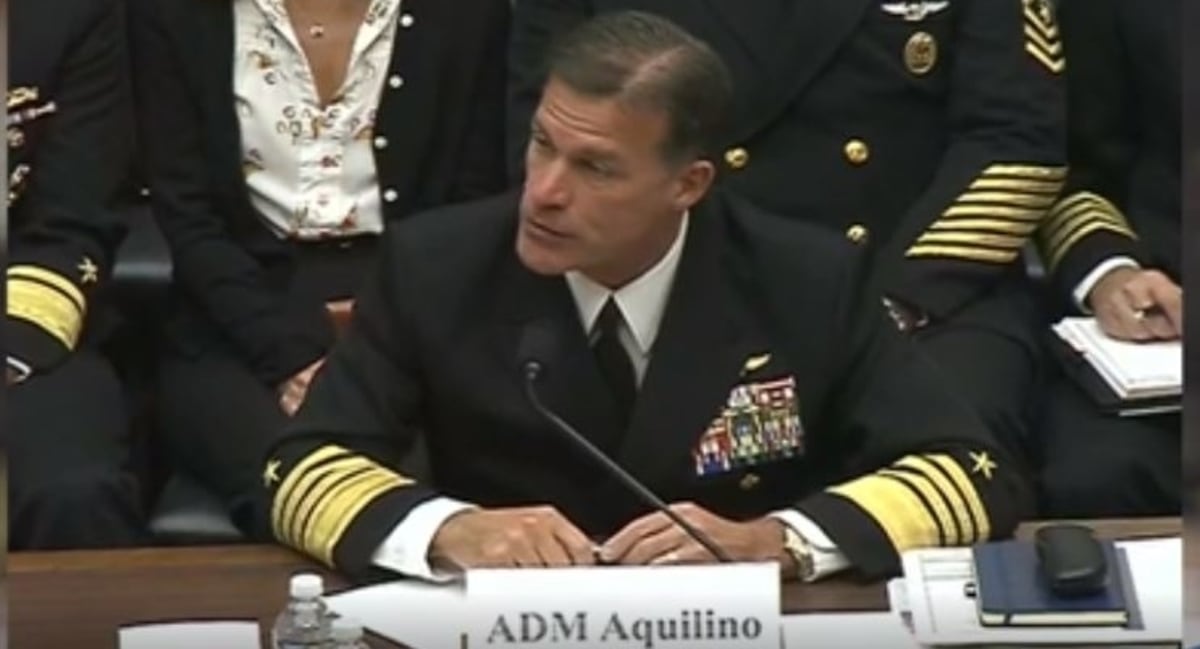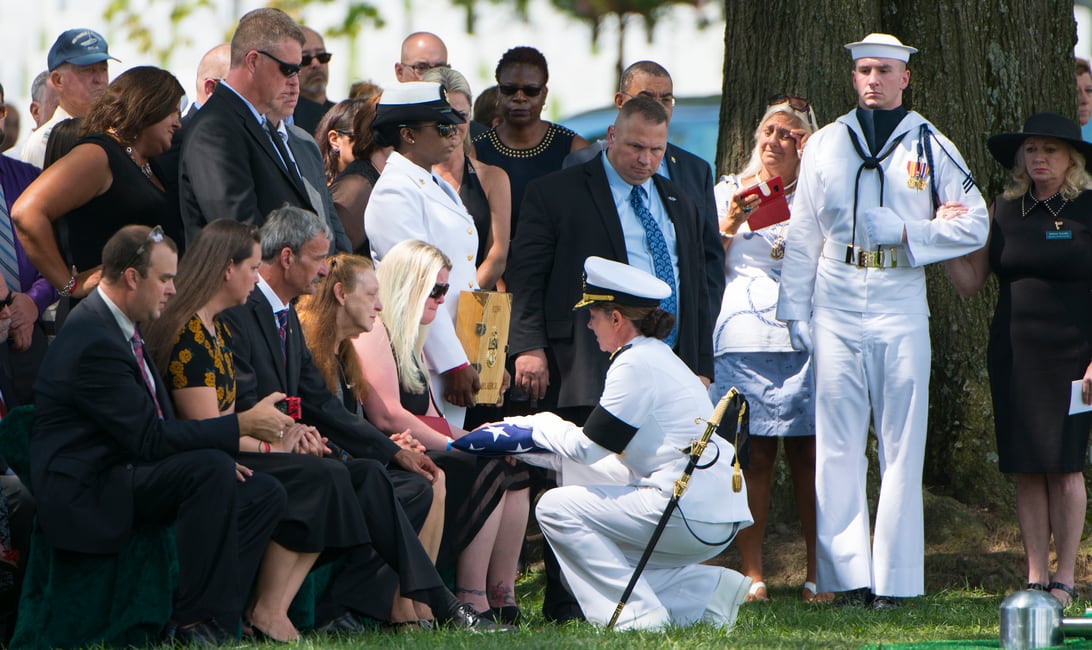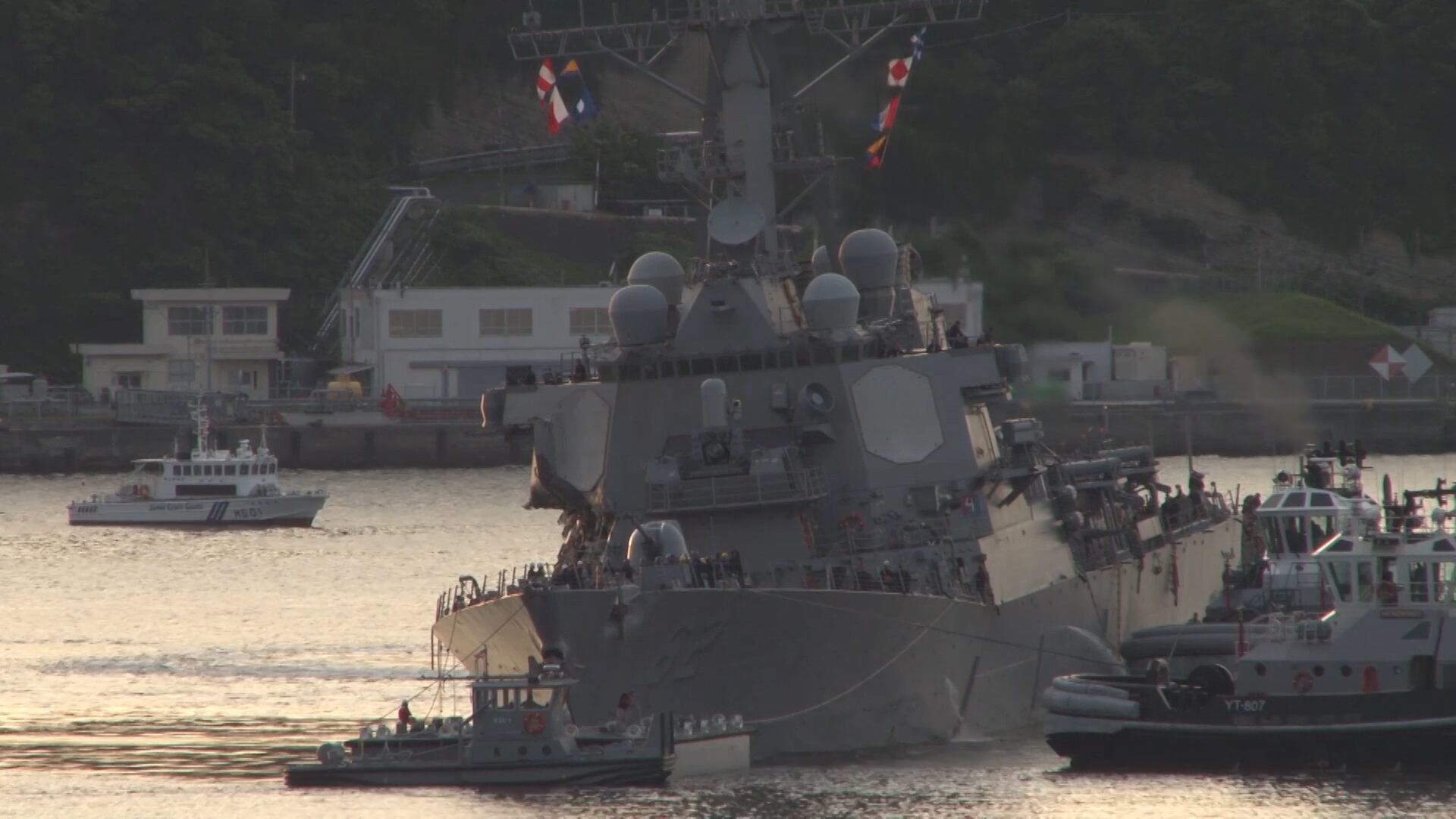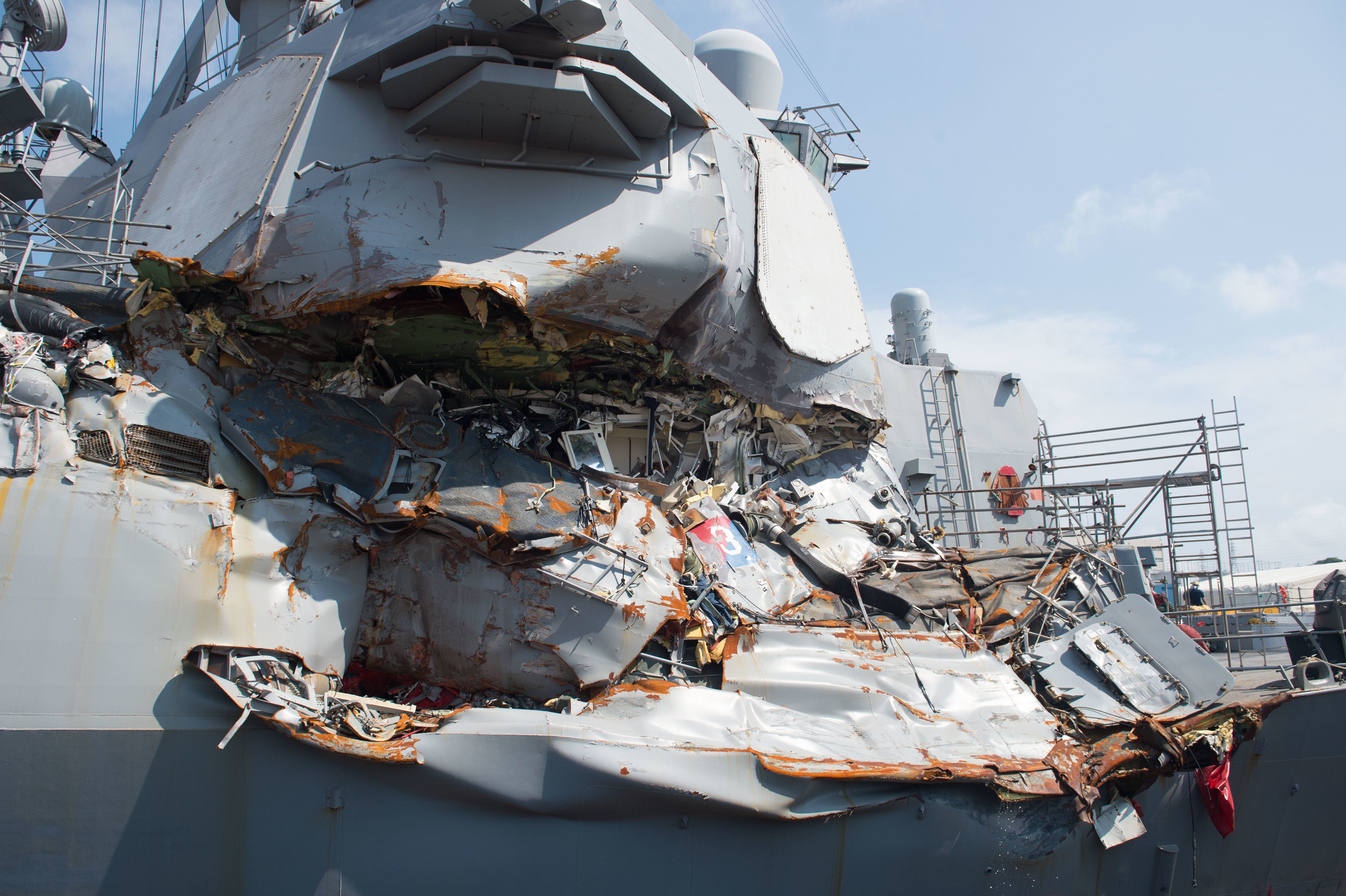In the wake of twin 2017 collisions that killed 17 sailors, the Navy has implemented most of its reforms designed to fix the surface fleet, according to an update posted online by officials this week.
The Navy has accomplished 91 of 117 tasks that stemmed from two Navy-wide reviews and other watchdog reports into accidents involving the guided-missile destroyers Fitzgerald and John S. McCain in the western Pacific, officials indicated.
The ongoing efforts of the Readiness Reform Oversight Committee are being overseen by Vice Chief of Naval Operations Adm. Bill Moran and Under Secretary of the Navy Thomas Modly, and have involved immediate fixes as well as longer-term and abstract goals such as changing the sea service’s culture.
“One year in, it would be naïve to believe we are close to completing RROC’s work,” the Navy’s online update states. “However, due to the efforts of many professionals around the fleet, we are currently safe to operate and a more effective Navy than we were a year ago.”
Go here to read the full list of reforms.
Among the accomplishments the Navy points to as signs of progress, Risk Assessment & Mitigation Plans, or RAMPs, were cancelled.
RAMPs allowed ships to still get underway using waivers, even if vital certifications had lapsed, one of several issues that plagued the Fitzgerald before its fatal collision.
The Navy’s update notes that all 7th Fleet ships underwent Ready-for-Sea Assessments, or RFSAs, to maintain proper manning, training and equipment status.
Fifteen of 18 warships assigned to Japan were graded as ready for sea duty in the past year. The remaining three “were immediately sidelined for additional training and maintenance prior to getting underway,” the update states.
“RFSAs are now required prior to a ship’s first underway period following a period of maintenance and represent a cultural norm that empowers and encourages Commanders to prioritize safety and communicate any concerns they have about readiness to operate before heading to sea,” according to this week’s status report.
Adm. John Aquilino, head of U.S. Pacific Fleet, told Congress this week that he has withheld ships from deployment recently when they were not ready to get underway.
RELATED

Investigators probing the two collisions focused on the problem of warships leaving port to make mission, regardless of their state of readiness.
In late 2017, Navy leaders implemented guidance for the surface fleet designed to make sure watchstanders and other crew members received adequate rest, but the latest update used cautious language to describe that progress: “Even though all ships reported compliance with the policy, anecdotal feedback indicates uneven compliance during manpower intensive operational scenarios,” the report states.
Although Navy leaders told lawmakers during a Tuesday hearing that the service is short 6,200 at-sea billets, the report indicates that manning requirements for Forward Deployed Naval Forces, or FDNF, are given precedence.
“Currently across FDNF, at-sea billets are filled at 100 percent in the aggregate, compared to the Navy-wide average of 95 percent,” the status report states.
However, service officials told Navy Times last month that the surface fleet also was still short 33 at-sea senior quartermaster billets, a vital position for safe ship handling and navigation.
Navy Times broke news last month of the service’s secret investigation into the Fitz collision, an account that painted a much grimmer picture of the problems plaguing the warship than what Pentagon leaders had previously acknowledged to the public.
That internal report revealed superiors at Japan-based Destroyer Squadron 15 begging Navy Personnel Command for more senior quartermasters.
The position was unfilled at the time of the Fitz collision and the absence of that senior enlisted leader was cited by investigators as a contributing factor to the collision.
RELATED

Since the Fitz collision, the Navy stood up Naval Surface Group Western Pacific, a new command solely focused on ensuring ships get the maintenance they need, according to this week’s status report.
Changes are or will be implemented regarding surface warfare officer training, and the service is exploring ways to better use data to focus in on trends and assess the efficacy of reforms.
Among other reforms, the update states that ship skippers now have direct lines to their respective type commander.
“The goal should be to provide the Type Commanders with a thorough understanding of the actual material, manning, training and logistic readiness of the ship for which they are responsible,” the update states. “This should be informed by the process used by Naval Reactors for aircraft carriers and submarine Commanding Officers.”
Naval Sea Systems Command is moving forward with a plan to put a second Automated Identification System, or AIS, laptop in each surface ship.
Used widely by commercial shipping, AIS locator beacons displayed on screens let crew members chart other vessels and avoid potential collisions.
In the Navy’s internal report into the Fitz disaster, investigators found an AIS system on the destroyer but crew members avoided using it because it went on the blink after a cord was jostled.
NAVSEA also has awarded contracts for commercial off-the-shelf radar systems for the surface fleet, with delivery beginning in April, according to the update.
Among longer-term, more abstract goals. the RROC calls for instilling a culture that does not default to “consuming readiness in favor of operations,” while also becoming a “forward-looking learning culture built upon systemic data analyses focused on leading indicators acquired throughout the Navy.”
RELATED

Questions about how well the Navy communicates its reforms to lawmakers arose during a tense Feb. 12 Capitol Hill showdown between Sen. Angus King, an independent from Maine, and Adm. Phil Davidson.
“I would like to see specific data on where we stand with issues like certification of sailors and personnel on the ships, maintenance status of the ships, training rules, staffing levels, and I want real numbers,” King told Davidson. “I don’t want general ‘We’re working on staffing,’ or 'We’re working on more training.’”
At one point in the hearing, Davidson bristled at the grilling.
“These two collisions were a tragedy, there is no doubt about it,” Davidson told the senator. “And all the senior leaders of the Navy feel a tremendous amount of accountability for it. But the fact of the matter is 280-odd other ships weren’t having collisions.”
In a Feb. 21 letter to King obtained by U.S. Naval Institute News, Davidson paraphrased portions of the latest update in his defense of the pace and progress of the ongoing reforms — 82 percent completed and the rest “on track” to being implemented.
This week’s Navy update, however, cautioned that “the hard work has only just begun.”
Geoff is the managing editor of Military Times, but he still loves writing stories. He covered Iraq and Afghanistan extensively and was a reporter at the Chicago Tribune. He welcomes any and all kinds of tips at geoffz@militarytimes.com.




